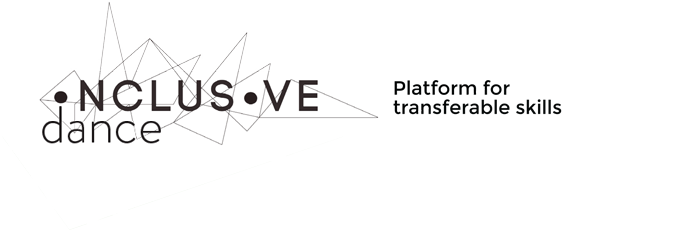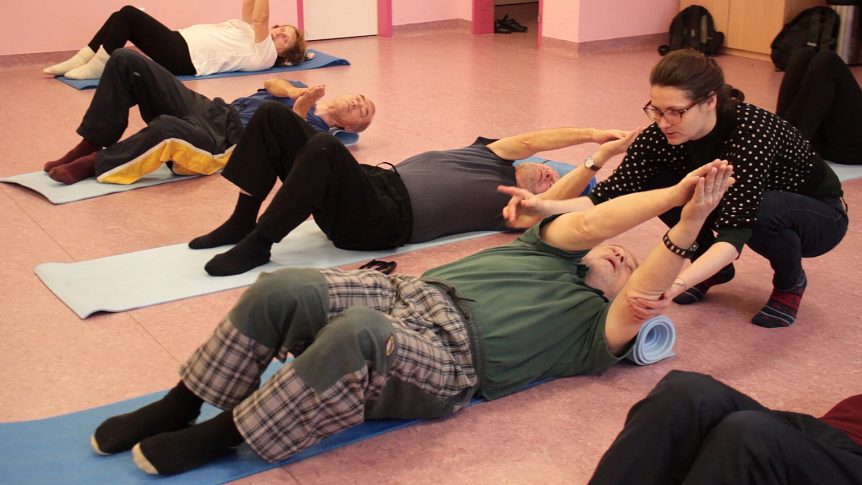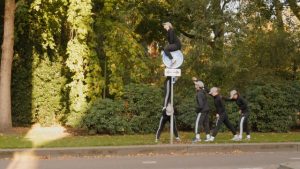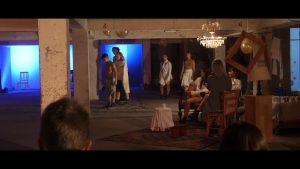by Tereza Vohryzková, leader of the Feldenkrais classes in Prague
On one of the videos shared on this platform “Feldenkrais Method for people suffering from Parkinson disease”, you can see the group doing a lesson from the Feldenkrais method called Coordinating flexors and extensors. This is one of Feldenkrais´ classic lessons, usually taught in the beginners classes. The lesson address the relationship between two elementary group of muscles. While the extensors on the back of our body help us stay upright, hold our head and torso in standing and sitting, the flexors in the front help with bending and flexing. The lesson brings in the idea of coordinating the action of the two in twisting movements. As a result of the lesson, the tonus of the body evens and people find it easier to coordinate their daily movements.
Moshé Feldenkrais invented over a thousand of these group lesson, which he called Awareness through movement. It is never enough of stressing that awareness is really the primary goal. The lessons, each lasting about an hour, bring attention to different movement patterns in our body, to our senses and how they work, and also often to the physiological process of breathing. During the lesson, the group is instructed to do simple movements and repeat them, but also to pay attention to how the movement is done. What parts of the body take part in the movement and how? Can I involve other parts of my body or my breath to make this movement? What make the movement easier and what makes it difficult. This way, the maps in our brain for each movement, or rather a set of movements which together compose a certain function (such as walking, standing etc)., are being reinvented and detailed. The result is an ease of movement. The body is re-learning how to move.
This is of course very helpful not just to a regular student (Feldenkrais called his practicants students, to stress the aspect of learning in the process), but especially to someone who suffers from Parkinson´s disease. The disease makes movement gradually disappear form the body, at least in its mechanic, automatic form, so bringing in the idea of conscious movement, and relearning the movement every step of the way should be an essential element of the treatment of PD.
Working with people with Parkinson disease is an interesting and challenging experience. My clients have to deal with severe limitations, such as stiffness and tremor, and the side-effects of otherwise beneficial medication (dyskinesia). There are positions which they cannot do because of the dopamine pumps (prone position). Yet I quite rarely see that they would not be able to do the movements I ask them to do, and if this is the case, then for reason unrelated to Parkinson´s disease. I found over time that choosing lessons with minimum changes in position from sitting to lying and vice versa helps both sides – we are less frustrated and don´t lose so much time.
What I see as a general theme is how age and disease, but also maybe lifelong habitus, has brought my clients away from their body and how “unacquainted” or unfamiliar they are with it. I often see them doing their daily movements the hard way, overloading fragile muscles and not using weight or bones to support them. These are really common problems we all share, but the PD clients, being disadvantaged by their disease, suffer twice.
So my focus over the time became to reinvent in the lessons the simple tricks that help us move around. How to get from the back to the side? How to support oneself into sitting? How to get up from the chair? The Awareness though movement lessons are ideal helpers, as they deal with these everyday movements and teach them again in a new perspective, step by step. This way I see the students rediscover the simplicity of movement, the possibility to use one´s weight or breath to move. I hope that in the long run, they will adopt a better knowledge of their body and will be able to trust it more, even though it fails them so often.






